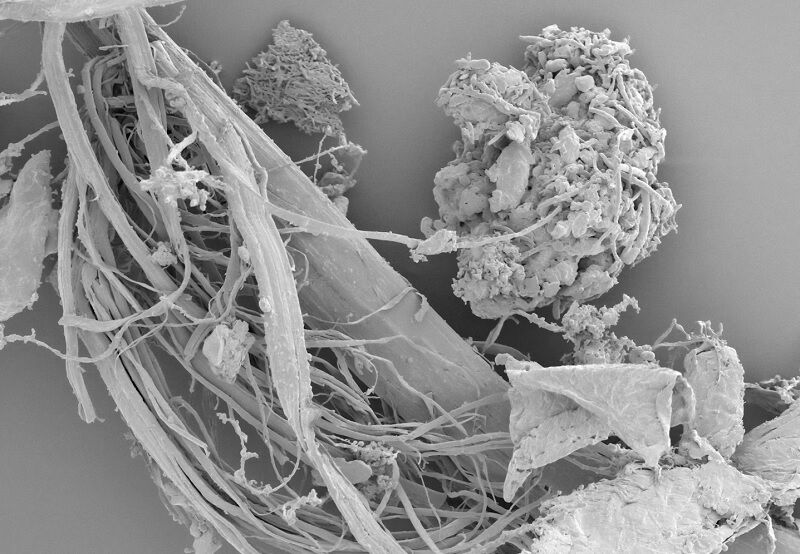Some common seasonal allergies in Thailand

Seasonal allergies in Thailand can significantly impact your daily life, especially if you’re sensitive to common triggers like pollen, dust mites, or air pollution. With the country’s tropical climate, understanding these allergies and how they vary with the seasons is crucial.
Research shows that household factors like dampness, mold, and the burning of biomass are closely linked to asthma and rhinitis symptoms. Interestingly, these associations become more pronounced depending on the season, highlighting the need for awareness and precautionary measures. Whether you’re a local or planning a visit, knowing what to expect and how to manage your allergies is key to enjoying all that Thailand has to offer.
What is an allergy?
When your immune system reacts to foreign substances like pollen, dust mites, or certain foods, it’s experiencing what’s commonly known as an allergy. These substances, although harmless for many, can trigger an overreaction in sensitive individuals, leading to various symptoms.
Important symptoms from allergy
Recognising the signs of allergies early can make a significant difference in how you manage them. Key symptoms to watch out for include:
- Sneezing and a runny or blocked nose: Especially common in seasonal allergies often seen in Thailand due to its lush vegetation and diverse plant life.
- Itchy, red, or watery eyes: A reaction to airborne allergens.
- Rashes: Appearing as red, itchy patches on the skin.
- Shortness of breath: Indicative of more severe allergic reactions.
Types of seasonal allergies

Understanding allergies and their implications on different body systems can empower you to take control of your health, particularly if you’re battling seasonal allergies in regions as diverse and vibrant as Thailand.
Tree Pollen
When tackling seasonal allergies in Thailand, one cannot overlook the role of tree pollen. Unlike temperate regions where birch pollen often takes the spotlight, Thailand’s tropical climate introduces a different set of challenges. Remember, navigating your allergies effectively means understanding precisely what triggers them, and in many cases, that trigger is tree pollen floating in the air you breathe.
Tree pollen counts can soar during certain times of the year, making seasonal allergies much more of a hassle. Seeking relief? You’re not alone. Many find that recognizing the specific trees contributing to their discomfort is an effective first step. In Thailand, diverse vegetation means a variety of pollen types are present. However, unlike regions where birch is prevalent, Thailand sees a different array due to its lush tropical environment.
Here’s a piece of advice worth noting: limit your exposure. While it might seem daunting, given tree pollen is virtually everywhere outdoors, there are manageable steps you can take. Regularly checking pollen forecasts helps plan your days to avoid peak pollen times. Also, keeping windows closed during high pollen counts can prevent these invisible intruders from entering your living spaces.
For indoor living areas, consider an air purifier. These devices can help capture and filter out pollen, reducing your exposure while you’re at home. Cleaning practices also play a crucial role in minimizing indoor pollen levels. Regular dusting and vacuuming, especially with HEPA-filter equipped appliances, can significantly cut down the amount of pollen that settles on surfaces and fabrics.
Lastly, it’s essential to clean your bedding, curtains, and any washable fabrics frequently in hot water. Not only does this practice tackle dust mites, but it also helps remove pollen that you’ve inadvertently brought indoors. For maximum effectiveness, washing these items weekly is your best bet.
Grass Pollen
When you’re battling seasonal allergies in Thailand, understanding the role of grass pollen is crucial. Unlike the assumptions many might have, grass pollen significantly affects children’s visits to emergency departments (ED) due to asthma exacerbations. Studies have begun to unravel the link between rising ambient levels of grass pollen and the frequency of these urgent asthma presentations in kids. Interestingly, this connection persists throughout the pollen season, not just following thunderstorms.
The impact of Grass Pollen
In warm climates like Thailand’s, grass pollens from Bermuda, Johnson, and Para (or buffalo) grasses are prevalent allergens. Allergic rhinitis patients commonly show sensitivity to these grasses, confirmed through skin prick tests (SPT). The nuanced part? Allergenic proteins in these pollens, crucial for understanding their impact, had remained unexplored until recent research probed deeper.
Scientific insights
Groundbreaking work has involved collecting serum from allergic rhinitis sufferers who react to at minimum two of the mentioned grass pollens. Through ImmunoCAP analysis, specifically for Bermuda and Johnson grass pollens, researchers could quantify specific IgE (sIgE) levels. This approach, coupled with immunoblot methods, allowed for the identification of major IgE bound proteins – a step forward in allergy research. Moreover, liquid chromatography-tandem mass spectrophotometry (LC-MS/MS) efforts pinpointed these proteins, paving the way for exploring their crossreactivity.
Dust Mites

As you navigate through the vibrant landscapes and bustling streets, a microscopic enemy lurks within your homes, often triggering those pesky seasonal allergies. Yes, we’re diving deep into the world of dust mites, a key player in the spectrum of allergens affecting numerous individuals, particularly during changing seasons.
How does a Mite causing Allergy?
Let’s break down the process. Dust mites, though invisible to the naked eye, pack a powerful punch. Here’s the sequence:
- Presence: Dust mites thrive in warm, humid environments – think mattresses, carpets, and upholstery.
- Allergens: Their droppings contain proteins that, when inhaled or come into contact with your skin, trigger your immune system to overreact.
- Symptoms: This immune response is what causes the sneezing, itchiness, and other symptoms you associate with allergies.
Understanding this chain of events can empower you to take proactive steps in managing your home environment, reducing your exposure to these microscopic troublemakers.
In addressing and mitigating the impact of dust mites on seasonal allergies, especially in the lively and diverse climate of Thailand, staying informed and proactive is key. Keeping your living spaces clean and opting for medical advice when necessary can make a significant difference in enjoying the changing seasons with ease and comfort.
Armed with the right strategies and a proactive mindset, you’re now better equipped to tackle seasonal allergies in Thailand. Understanding the local climate’s role in allergen distribution is crucial for staying ahead of your allergies. By keeping an eye on pollen and mold counts and implementing practical measures both indoors and outdoors, you can significantly reduce your exposure to allergens. Remember, adapting your allergy management plan in response to climate change is also essential for long-term relief. Take control of your environment, and don’t let seasonal allergies dictate your life in Thailand.
You can also check out Common diseases in Thailand,It is a gorgeous tropical country. Because of these reasons, Thailand is one of the world’s most popular tourist destinations. However, due to factors like biodiversity, socioeconomic background, tropical climate, and frequent interaction between humans and animals, there are certain diseases visitors need to watch out for. Therefore, it’s always a good idea to do some research first about the most common disease before you fly to the country.
Latest Thailand News
Follow The Thaiger on Google News:


























